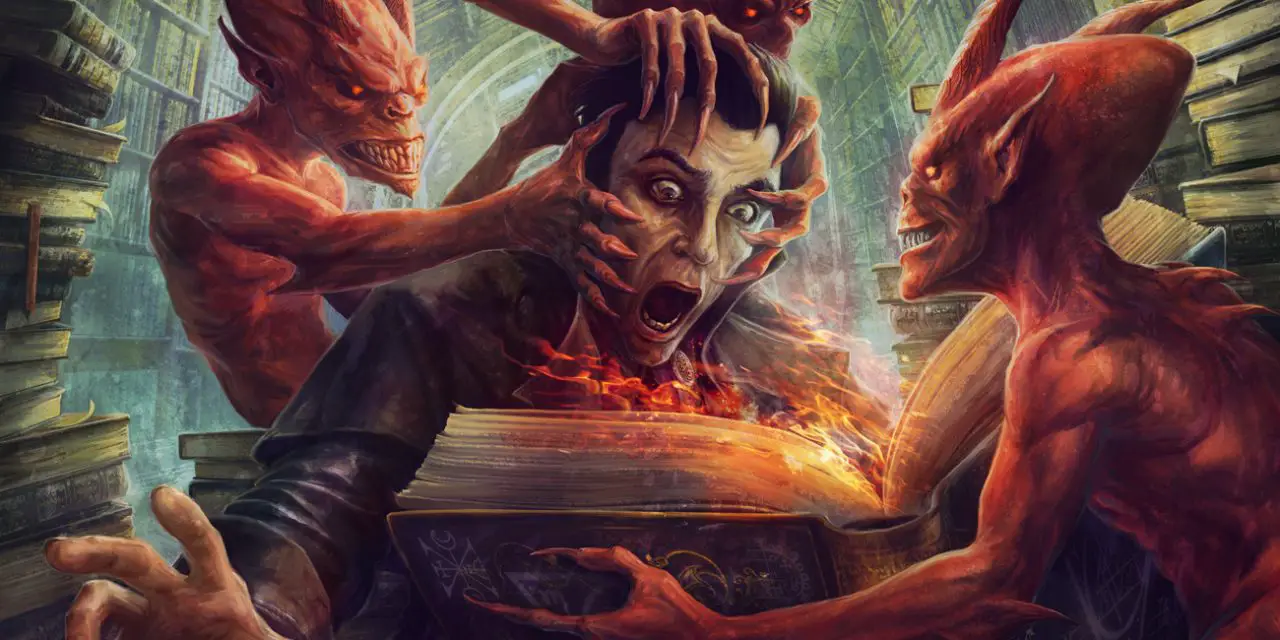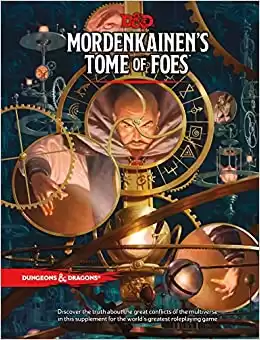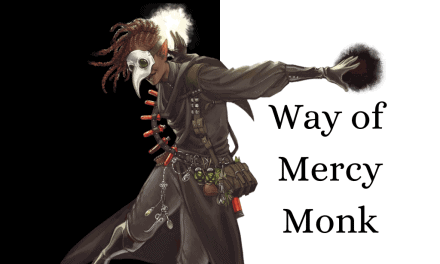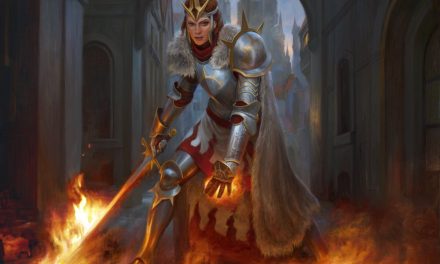Dark deals and infernal bargains abound for Warlocks who make a deal with a Fiend patron!
Those who oppose these Warlocks have to prepare to go against the fires of the Hells themselves. Those who stand alongside these characters… well they might be just as scared if we’re being honest!
Considering making a deal with a Fiend to trade your soul for arcane power?
Don’t sign that contract before reading this full guide to the Fiend Warlock in D&D 5e!
What is the Fiend Warlock in D&D 5e?
In many ways, the Fiend Warlock is the classic Warlock archetype.
It’s strongly reminiscent of stories like Doctor Faustus in which someone makes a deal with the devil to gain short-term power at the cost of their soul. These are people who have made their deal with some powerful entity from the Lower Planes.
Devils are the most common Patrons for Fiend Warlocks. After all, their never-ending schemes mean that there’s no shortage of ways to use their newly-acquired Warlock.
Archdevils like Asmodeus, Mephistopheles, and Dispater are popular choices as Patrons.
However, a Fiend Warlock might have made their deal with a much more chaotic force. While demons and Demon Lords tend to prefer a more destructive and direct approach, they might be inclined to make a deal.
Demon Lords like Fraz’Urb-luu, Graz’zt, and Demogorgon are common options that you might consider.
Of course, it’s also possible that your deal was made with some other fiend that isn’t on the same tier as these examples. Pit fiends, Balors, and Yugoloths can sometimes be powerful enough to strike such a deal.
The Fiend Warlock appears in the 5e Player’s Handbook alongside two other Warlock subclasses: the Archfey and the Great Old One.
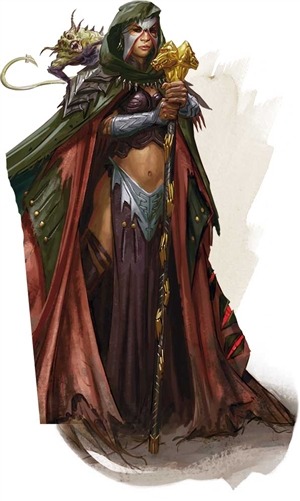
Role in the Party
Regardless of which patron you choose, the Fiend Warlock uses their patron’s dark powers to disastrous effect.
Much of the Fiend Warlock’s kit in D&D 5e is geared towards blasting enemies to cinders while giving yourself some extra defensive bonuses.
We’ll talk more about the various Pact Boons in more detail later in this article, but the Pact of the Fiend can actually work really well with almost any of them. Where most of the Warlock Patron options lean towards a specific role in the party, the Fiend Warlock is pretty adaptable.
That said, the Fiend Warlock also gets a very nice expanded spell list. Because of that, these Warlocks very commonly work as the party’s blasters.
Related: The Ultimate Guide to Warlock Patrons in D&D 5e
Fiend Warlock Features in D&D 5e
As I mentioned, the abilities that Fiend Warlocks get are largely meant to toughen them up while also empowering them to put out some great damage.
Your spell list has some powerful damage options while the features that you gain are where you get your defensive buffs. The capstone ability, however, is one of the coolest damage-dealing abilities in all of D&D 5e!
Let’s dive in!
Expanded Spell List
First up, we’re going to look at the Fiend Warlock’s expanded spell list. These are the extra spells that your patron gives you to further assist you in doing their bidding.
| Spell Level | Spells |
| 1 | Burning Hands, Command |
| 2 | Blindness/Deafness, Scorching Ray |
| 3 | Fireball, Stinking Cloud |
| 4 | Fire Shield, Wall of Fire |
| 5 | Flame Strike, Hallow |
Thoughts on the Fiend Warlock’s Expanded Spell List
Starting with the level 1 spells, Burning Hands is a solid AoE that will serve you well at the lower levels. As you level up, though, you’ll want to drop it since it doesn’t scale very well.
Command, on the other hand, is one that can be very useful (especially against bosses!) at any level.
Your level 2 spells are a bit on the “meh” side, admittedly.
Blindness/Deafness can do well to shut down enemies, but it’s tough to justify using it over damaging spells as a Fiend Warlock. Scorching Ray isn’t bad and gives you a good damage option that isn’t Eldritch Blast and scales well.
Gaining level 3 spells gives you the big boy itself: Fireball. Needless to say, this is a great spell for dropping a ton of AoE fire damage at once.
If you’re looking for something more geared towards controlling the battlefield, Stinking Cloud is another great spell your patron is giving you!
Moving on to your level 4 spells, you gain Fire Shield and Wall of Fire.
Fire Shield is more on the situational side and realistically is only really going to be useful if you’re taking the Pact of the Blade. You have a small number of spell slots, so I’m not sure this is one I’d particularly recommend otherwise.
Wall of Fire on the other hand is a great way to drop a ton of damage while also exercising some control over the battlefield.
Your level 5 spells are admittedly disappointing.
Simply put: Flame Strike is a worse Fireball and not worth it for you. Similarly, Hallow is a cool spell that just doesn’t really offer enough value to you to warrant using your very limited spell slots on. In this case, the juice just isn’t worth the squeeze, as they say.
Dark One’s Blessing (Level 1)
Upon making a deal and becoming a Warlock in service of a Fiend patron, you immediately gain the Dark One’s Blessing feature.
When you reduce a hostile creature to 0 hit points, you gain temporary hit points equal to your Charisma modifier + your Warlock level (minimum of 1.)
Realistically, you’re going to get a ton of use out of this ability. You’re more than capable of putting out some fantastic damage which means you’ll likely have this pool of temporary hit points helping you out in just about every combat you enter.
Prioritize dropping weaker enemies in combat to keep your temporary hit points up. From there, you’re free to focus down the big bad but have an extra HP buffer to help you.
Related: Temporary Hit Points Explained
A Quick Rant About Dark One’s Blessing
I’ve seen it suggested around the internet that you can carry a bag of critters around with you to farm this ability.
The idea is that you get your bag of critters nice and angry so that they’re “hostile” then Eldritch Blast one of them to smithereens. With that done, you gain a nice chunk of temporary hit points.
If we’re talking RAW in the purest form, I guess this works…
Personally, I don’t think that’s at all in the spirit of how this ability is meant to function.
I imagine this ability as your patron rewarding you for harvesting souls by giving you extra vitality. What use does your patron have for a bunch of rats, worms, or whatever else you’ve been carrying around? I’m sure they’d prefer something with a bit more substance, you know?
Maybe I’m just a bit of a grump on this matter, but I don’t know that I’d go for that at my table.
I feel like a DM that’s cool with the Warlock doing something so cheesy is probably the same kind that’s ok with something like the Peasant Railgun.
Dark One’s Own Luck (Level 6)
There’s something to be said about the relationship between Fiends and Lady Luck.
In recognition of your service, at level 6 your patron gives you a dark blessing of some of their own luck. When circumstances are dire, your patron can intervene and possibly alter fate in your favor.
When you make an ability check or a saving throw, you can use this feature to add a d10 to your roll. You can do so after seeing the initial roll but before any of the roll’s effects occur.
Once you use this feature, you can’t use it again until you finish a short or long rest.
This may sound like a small feature, but it can potentially be the difference between life and death!
It can be a little bit of a shot in the dark to use this feature. You make your roll then have to decide what the odds of a d10 roll helping you succeed are.
Because this feature applies to both ability checks and saving throws, there’s some good versatility here. You might use it to avoid flubbing an attempt to deceive an NPC just as surely as you might use it to avoid falling down a pit trap.
In those dire moments, you’ll be thankful you had this!
Don’t be too scared to use this though. You get it back alongside your spells when you complete a short rest!
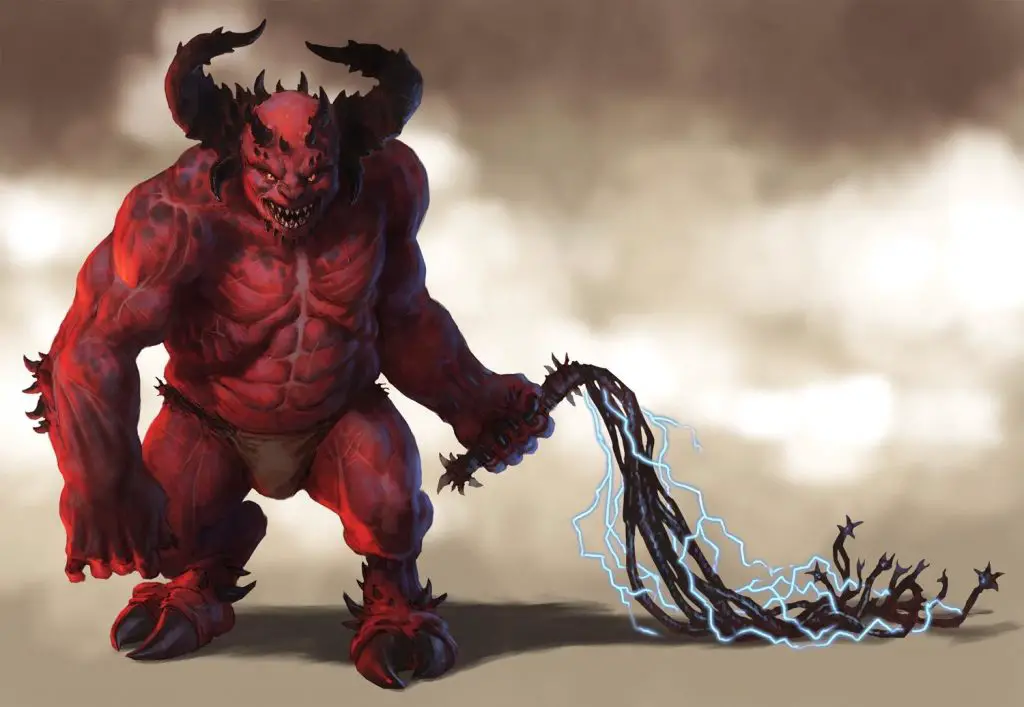
Fiendish Resilience (Level 10)
Level 10 sees the Fiend Warlock developing resistance to their chosen type of damage.
Choose one damage type when you finish a short or long rest. You gain resistance to that damage type until you choose a different one with this feature.
Damage from magical weapons or silver weapons ignores this resistance.
You’ll be taking enough short rests to recover spell slots that this feature can be wonderfully adaptable. After all, you’ll probably have some good ideas as to what type of damage you can expect to encounter up ahead.
You might choose to gain resistance to melee attackers’ damage via bludgeoning, piercing, or slashing weapons.
If you’re about to attack a bunch of enemies that you know has archers defending the gates, it’s probably wise to gain piercing resistance. On the other hand, you might be better off gaining resistance to something like poison if you know there’s a green dragon that might take issue with you attacking its servants!
Consider what type of threats are likely to be ahead and choose your Fiendish Resilience accordingly.
As long as you’re not getting hit by magical or silvered weapons, you’ll only take half damage of your chosen type!
Related: The Complete Guide to the Warlock Class in D&D 5e
Hurl Through Hell (Level 14)
We’ve finally arrived at the Fiend Warlock’s capstone ability at level 14. As I mentioned, this is seriously cool and I can’t be convinced otherwise!
The flavor, the mechanical possibilities, so many damage dice… it’s wonderful!
When you hit a creature with an attack, you can use this feature to instantly transport the target to the Lower Planes. The creature disappears and hurtles through a nightmare landscape.
At the end of your next turn, the target returns to the space it previously occupied or the nearest unoccupied space. If the target is not a fiend, it takes 10d10 psychic damage as it reels from its horrific experience.
Once you use this feature, you can’t use it again until you’ve finished a long rest.
In other words, once per day you get to smack somebody so hard that they spend the entire next round flying through the hells. Not only are they going to take a very respectable 10d10 damage when they return from their unexpected trip, but they’ve also lost their entire turn.
If you want to be really cheeky, you could even set a trap, spell effect, or readied action to hit them for even more damage when they return to the space that they were in the previous round.
Keep in mind, this doesn’t have to be a melee attack. Hitting them with an Eldritch Blast is enough to trigger this feature if you are so inclined.
Even better: there are no saves or maximum range involved here.
So you could hit them with an Eldritch Blast, use Hurl through Hell, then throw down a Wall of Fire or Hunger of Hadar for them to land in when they come back from their trip.
It’s brutal, disgusting, and just so wonderfully fantastic. Using this on a boss not only deals a ton of damage to them but it also gives your whole party a quick round to heal back up before combat resumes!
Sure you can only use this once per day, but it’s an absolute game-changer of a feature!

Pact Boons for Fiend Warlocks in D&D 5e
As I mentioned earlier in this article, the Fiend Warlock has great potential for almost any of the Pact Boon options. Personally, I think they’re best as a blaster, but that’s just me.
So we’ll look over how each of the Pact Boons works with the Fiend Warlock.
I would recommend checking out my guide to Pact Boons, though. That article goes more in-depth about how exactly Pact Boons work.
Pact of the Blade
The Pact of the Blade is for those who like to get up close and personal with their enemies.
There’s a great overlap between the Fiend Warlock’s features and the Pact of the Blade. Gaining temporary hit points and resistances while also being able to bend your luck in those do-or-die moments gives you some great survivability.
Of course, nothing stops you from still throwing out damage with your spells. However, you might find it more useful to focus your spells on those that offer you some extra battlefield control or defensive abilities.
It’s not a bad idea to look into taking the War Caster feat if you choose the Pact of the Blade. It’s a great feat that makes you even more dangerous on the frontlines.
I’d also recommend going with a Finesse weapon like a rapier. Otherwise, you’ll likely find yourself spreading your ability scores out pretty thin.
Also Check Out: The Best Eldritch Invocations for Warlocks in D&D 5e
Pact of the Chain
The Pact of the Chain is a powerhouse Pact Boon at lower levels.
Having a familiar (especially the imp) to help you opens up so many options for your character in play. Even at later levels, your familiar might be able to do some scouting to give you some ideas for your Fiendish Resilience feature.
Additionally, there’s an especially great overlap in theme between the Fiend Warlock and choosing the imp familiar.
This isn’t a bad option by any means, but it’s best for lower level adventures, in my opinion.
Pact of the Talisman
The Pact of the Talisman is a passive option that offers some extra support to your party.
In the case of the Fiend Warlock, this isn’t a particularly great option overall. The support that your Talisman offers can be very useful, but your focus needs to be primarily on damage output and maybe a touch of utility.
Unfortunately, the Pact of the Talisman doesn’t play to the Fiend Warlock’s core strengths so well. I’d pass on this one.
Pact of the Tome
My personal pick for Fiend Warlocks is the Pact of the Tome.
This Pact Boon and the Eldritch Invocations it unlocks for you really carve out your role as the blaster from hell. Literally!
Expanding your cantrip options to include some utility picks is nice. Realistically, Eldritch Blast is still going to be your go-to for damage.
But it’s mostly useful for allowing you to cast ritual spells by taking the Book of Ancient Secrets invocation. Warlocks don’t typically offer a lot of utility to their party, but this changes that!
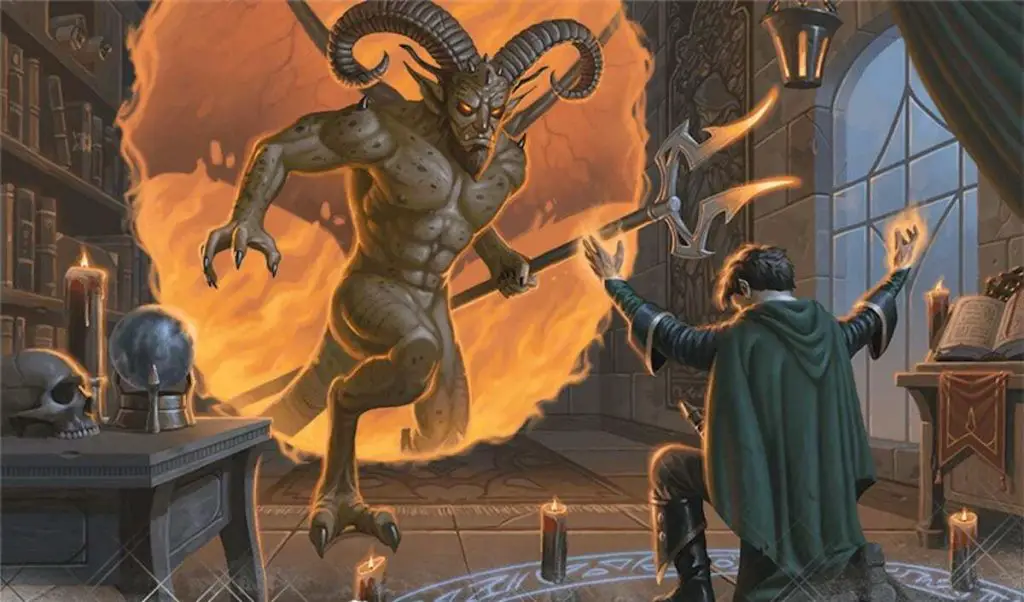
Connections
So what are some ways that you might connect your Fiend Warlock to your party and campaign?
It all really starts with what your character wanted so badly that they were willing to make a deal with a fiendish entity from the lower planes!
Ideally, this goal is something that can tie in to the larger campaign. The nature of making a deal with a Fiend is that, more than any other Patron, it’s virtually impossible to renegotiate your way out of it.
Your patron has offered you the powers to obtain what it is that you long for. It might be that the adventure sees you furthering your patron’s agenda in the hopes that you will receive your reward. It might even be through their own manipulations that you are introduced to the party.
There’s virtually no limits when it comes to your warlock’s interactions with the Fiend patron.
A key question that particularly applies to the Fiend Warlock is: how does your character feel about their deal?
Was it one made from a desire for power at any cost? On the other hand, was it a desperate attempt to get another opportunity to right some wrong? Are they proud of the bargain?
Last but not least, does your character believe that their soul is forfeit or do they think they can eventually outwit their new patron?
For Fiend Warlocks players and DMs that want to learn more about demons, devils, and the lower planes, I recommend checking out Mordenkainen’s Tome of Foes. There’s a ton of lore in there that will really help you flesh out your Fiend Warlock (and their patron) in incredible detail!
Is the Fiend Warlock Good?
As the prime example of what the Warlock class is, the Fiend Warlock does not disappoint. It’s got some great versatility to it but is still an incredibly powerful damage-dealing blaster class.
The features that you gain as you level up do a lot to increase your survivability. If you make sure to manage your spell slots well, you’re capable of dropping some truly impressive damage on your foes.
Because so much of the Fiend Warlock’s abilities are based on dealing fire damage, I would strongly recommend making time to pick up the Elemental Adept feat. That will help you deal with creatures that would otherwise have resistance to fire damage (of which there are quite a few!)
All in all, the Fiend Warlock is an excellent choice for Warlocks who want to reduce all that stand in their way to ash.
To what infernal ends, however, that remains to be told…
To see how the Fiend Warlock ranks against the other Patron options, check out my ranking of every Warlock subclass in 5e!
Conclusion – Guide to the Fiend Warlock in D&D 5e
So what do you say? Are you ready to sign the contract?
Oh, that really small text at the bottom? It’s nothing, don’t worry about that!
Just sign your name on the line, and all the power you could dream of will be yours!
*Ahem*
So… uhh… anyway…
I hope you’ve found this guide to the Fiend Warlock in D&D 5e helpful! With so many subclasses available to choose from, it is nice to see the classic Warlock getting plenty of love!
Still have questions or want to share your experience playing a Fiend Warlock? Leave a comment below!
In the meantime, don’t forget to subscribe to my newsletter below so that you never miss any of the tips, tricks, guides, and more being published every week here on Tabletop Joab!
You can also follow me on Facebook and Twitter.
If you found this article helpful and want to support the site, you can buy me a coffee here! (It’s not expected, but very appreciated!)

